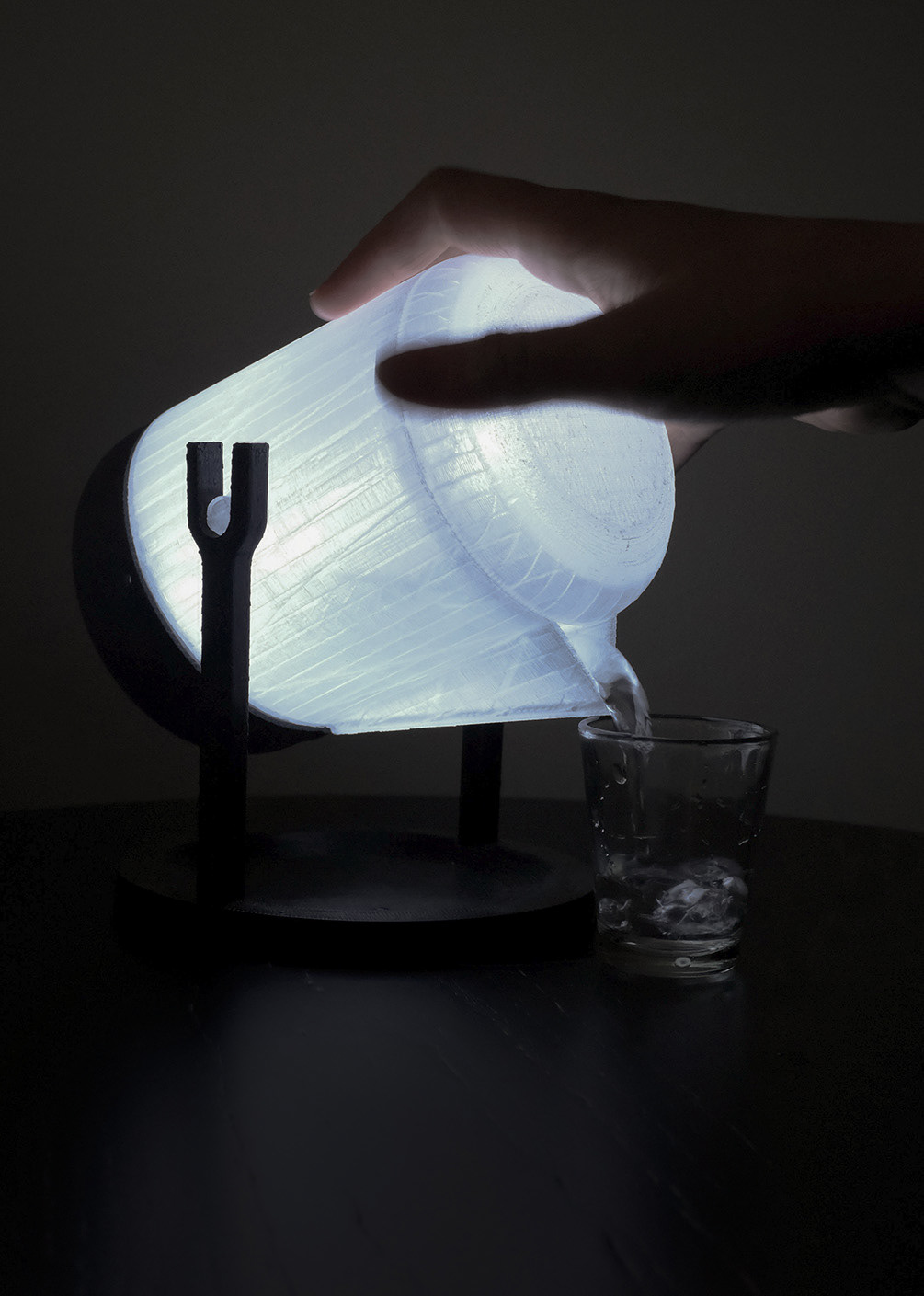
Aqua Lux is an interactive bedside lamp that hydrates. Created during an interactive products course, this design explores the connection between light, and the act of having a sip of water during the night.
The simple gesture of tilting the lamp turns the light on. Further tilting turns the lamp to a bedside carafe.
Brief
For a university course titled 'Methods of Interactive Products', we were asked to explore user-experience interactions. This process involved first identifying an every-day interaction, and then identifying related desires and insights through design scenarios and prototype interactions. User-centred research strategies were employed throughout the design process, such as a cultural probe and interview.
Design Process
Beginning with a starting point of exploring personal hydration habits, a cultural probe was designed to capture the daily drinking routines.
Cultural Probe
The aim of the cultural probe is to support participant engagement within the design process, through open-ended self-documentation.
The On-the-Go Kit: An instant camera is used to capture photos of beverages. Paper templates are provided as an alternative if the camera is inconvenient. A notebook is provided with instructions.
The At Home Kit: A pinboard is provided, with attached timeline sheets. Here, daily hydration habits can be documented by pinning the photos and drawings onto the board.
Completed Cultural Probes
The completed kits revealed some interesting insights about the habits of the participants. Some key differences include monetary habits and the reusing of drinking vessels.
The findings were summarised through a storyboard, showcasing the act of having a sip of water at night.
Existing interaction storyboard: 1) Being asleep, 2) Waking up, feeling thirsty, 3) Reaching for a glass of water, 4) Taking a sip of water, 5) Putting the glass back, 6) Falling asleep again.
Something that became apparent through this research is a definite opportunity to design something surrounding night-time drinking habits – both participants would benefit from having something that supports their nightly hydration routine.
A lighting experience that connects the habit of waking up and having a sip of water, with a soft illumination of this action, is the new interaction that will be explored.
Design Process
A designed interaction was explored through a storyboard. An ideal experience for the participants of the cultural probe involving their night-time water-drinking habits involves a vessel that doesn't need to be refilled daily. This lowers the risk of forgetting to do this, and having to get up at night.
Participants reported that they didn't drink much at night; only a sip or a few hundred millilitres. The design caters to this by being in the form of a water dispenser, where a simple gesture determines the quantity of water that is released.
Also mentioned was the need for a very dim light, with no distracting patterns, that turns off and doesn't stay on during the night. The newly designed interaction will therefore involve the water dispenser being the source of light that illuminates the action of having a sip of water at night.
Designed interaction storyboard
Making of
The different components were modelled in Fusion360, and FDM 3D printed using PLA and ABS filament. Initial failed prototyping prints created opportunities for printer recalibration, material exploration, and remodelling for better tolerances between parts. The black base was treated with acetone, resulting in a matte finish.
The design uses a simple parallel circuit consisting of a mercury tilt switch, four 580 Ω resistors, four white LED pins, and is powered by a 9V battery. This is located within the black base of the design, which is accessible so that the battery can easily be replaced.
Final Prototype
Future development of the project would focus on further form finding and refining of the electronic components.